Like most other collectors, my fascination with Fire-King Jadite dishes began because my Mom used them and started her own collection. And my Mom loves them because she saw her Mom and Grandma use them in the kitchen daily.
Collectors have a deep rooted sense of nostalgia.
From leftovers, to simple weeknight meals, to Christmas entertaining, to planning my wedding last summer; I’ve served food on Jadite everyday for several years now. In my kitchen, an idea for a meal doesn’t start with a recipe. It starts with “what Jadite dishes should I use today?”
After Mom’s and my Jadite collection grew, it became a project to organize our inventory. With prices for Jadite dishes steadily increasing, we started documenting what we paid, and researching ever-increasing prices for what appears to be a bulletproof investment.
Then my curiosity led me to learn more about the companies that made Jadite dishes – which turned out to be quite the rabbit hole.
Anchor Hocking started in 1905 – 117 years ago.
The history on Anchor Hocking’s website barely amounts to 300 words.
How can you define 117 years of a company’s history and not even fill a blog post worth of content?
Why would a company that’s stood the test of time not brag about their history?
Something must be up.
I even tried going to the Internet Archive to find older versions of the Anchor Hocking website. But much like the physical assets, machinery and factories once owned by Anchor Hocking, their history had been stripped away too.
Then I read the book that tells the story of Anchor Hocking:
Glass House: The 1% Economy and the Shattering of the All-American Town, by Brian Alexander.
Everything you wanted to know about Anchor Hocking: the golden years coming out of the Great Depression, the inner workings of the factory, stories from CEOs, and the convoluted and damaging business ventures of the 1980s onward.
Anchor Hocking provided jobs, a reliable paycheck and security for thousands of residents. The factory was an integral part of Lancaster.
Once portrayed as the Norman Rockwell idyllic place to work, get married and raise a family, Lancaster, Ohio was the charming All-American town.
Despite enduring two World Wars and The Great Depression, Anchor Hocking did more than weather the storm – it thrived.
They found ways to innovate, be consistent and produce the beautiful dishes we love to use and collect.
There was even a company baseball team, a bowling team, and a band. There was a profound sense of belonging.
So what went wrong?
1. Fire-King Dishes Stopped Being Produced
The decline of Anchor Hocking happened shortly after Fire-King dishes stopped being produced in 1976. Coincidence, or just an interesting talking point?
The colorful Fire-King dishes we love to collect stopped being made. Philbe, Jane Ray, Ruby Red, Forest Green, Peach Luster, Cobalt and Delphite were a thing of the past. Transparent bakeware with no character became its replacement. The dishes became soulless.
Kind of like the private equity firms that purchased and bankrupted Anchor Hocking.
Current Prices for Jadeite Dishes
2. The Rich-Poor Gap Grew
From the 1940s through 1970s there was an unwritten social contract where company executives and floor employees worked towards common goals: work hard, better the company, and have a sense of belonging. You played by the rules and you could afford to buy a house on a job’s wage. You weren’t going to get rich, but you could make a living, send your kids to college, and retire comfortably.
Since the 1980s there has been a dramatic shift in wealth from the middle class to the richest people in America.
“In 1978, the top 0.1% owned about 7% of the nation’s wealth. In 2019, the latest year of data available, they own nearly 20%.” (Sanders)
Private equity firms created money from nothing and paid themselves to profit off the backs of everyday working people.
The rules of the game changed. There was betrayal.
Big business said “trust us”. The government said “trust us”. Just let us do our thing and we will deliver prosperity and opportunity back to you.
We’ve been asked to trust them time and time again. Then there was no more trust left in the system.
And why should there be? The story of Anchor Hocking betraying Lancaster, Ohio goes beyond just Anchor Hocking. The same story has happened all around America. “Small business bad. Big business good.” was the mindset.
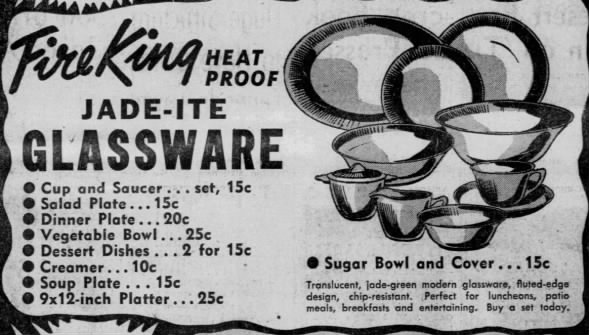
3. No Roots Anymore
“Anchor Wives” were the Anchor Hocking’s executives’ wives. While their husbands were off at the factory making big business deals, they volunteered and served their community. (Alexander 28)
At Thanksgiving, Anchor Hocking backed up a truck full of turkeys so employees could each take one home to their families for the holidays.
The Fire-Kings beat the “Azurites” in a ladies league bowling game.
Executives lived around the block from floor employees.
Working at Anchor Hocking was peoples’ livelihood. It was important.
In the 1930s there was talk of the headquarters moving to New York. But Lancaster and Anchor Hocking relied on each other. There was just no way they could move. Instead, they funded and built the Hotel Lancaster to accommodate traveling businessmen who visited from New York. Businessmen could travel to Lancaster.
As if that history was meaningless, after 112 years of staying in Lancaster, in 2017 the Anchor Hocking headquarters moved to the state’s capital, Columbus, Ohio – about a 45 minute commute.
Moving to a big city made sense in many ways: attract big talent, have no emotional ties, and have an escape route when things go wrong.
The same story that happened to Anchor Hocking and Lancaster has been happening across small town America. Wall Street firms bleed companies dry before bankrupting them and selling them off piece by piece.
View this post on Instagram
4. Work Became Unreliable
Once a paycheck employees could rely on, buy a home and raise a family was replaced with uncertainty.
A workforce steadily dwindling and being strong armed into accepting lower wages and no pensions. Unfair phone calls just prior to their shift saying “don’t bother coming in today”.
What does that do for morale? How does one set roots in Lancaster? The executives wouldn’t know. They haven’t lived there for decades.
As of 2017, more than 20% of Lancaster residents were below the poverty line. A bust town, now stricken by poverty and drugs. (“FORBES @ 100: NOVEMBER 15, 1947: the POSTWAR DREAM”) (“Forbes @ 100: November 15, 1947: the Postwar Dream”)
A situation that couldn’t be ignored, the local paper, the Lancaster Eagle-Gazette even featured a story titled “Seven Days of Heroin, This is what an Epidemic Looks Like”. (“Forbes @ 100: November 15, 1947: the Postwar Dream”, Staff Report 1)
Is this what it takes to stamp “MADE IN USA”?
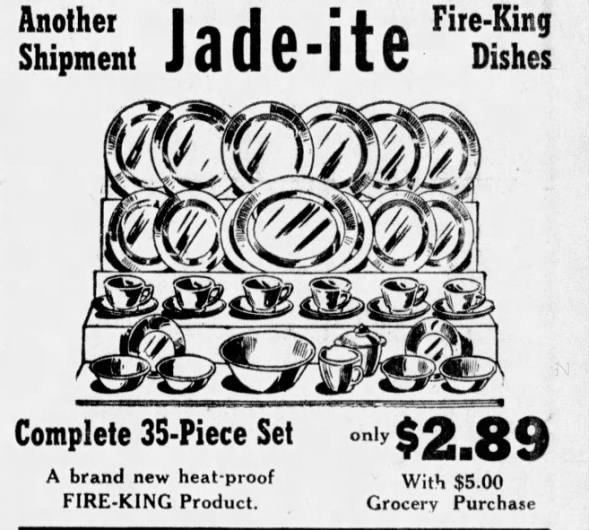
5. Private Equity Takeovers
An abundance of natural gas brought Anchor Hocking to Lancaster. The town was sitting on top of it. A discovery in the late 1800s, towns across America benefitted as it allowed for cheaper manufacturing costs. It was also an opportunity to start a new business venture. It was the All American Dream – until it wasn’t.
The once thriving Anchor Hocking that survived two world wars and The Great Depression, has been passed around from one private equity firm to another, while facing two bankruptcies in 2006 and 2015.
Convoluted business ventures from the 1980s onward involved private equity firms funding the twice bankrupt glassware maker with debt financed buyouts, takeovers, and forced mergers.
Meanwhile, they increased their own value tenfold. Wall Street bankers Cerebus went from being worth $12 billion to $45 billion. Monomoy Capital increased its value from $280 million to $2.7 billion.
At its peak, Anchor Hocking employed 5,000 people in Lancaster. After going bankrupt in 2006 and 2015, the number of employees dropped to 450.
The soleless roots we see in today’s business world aren’t building a better future. They’re just taking advantage of the past.
View this post on Instagram
6. Not Celebrating Their History
Anchor Hocking’s Story includes a rather dismissive summary of their 117 years in business.
In contrast to passionate Fire-King glass collectors who love to display their collection, it’s as if Anchor Hocking is trying to wipe away history, ignore those dirty dishes, and not proudly showcase it for all to see.
After much research, I have a couple takes on why Anchor Hocking isn’t eager to showcase their history: Maybe they’re embarrassed? Maybe existing as a soulless business entity is the intent? After all, having fewer emotional ties would make it easier for the company to be sold off again.
Anchor Hocking’s Plant 1 isn’t easy on the eyes. Backing onto the railroad tracks, rusted tin roofs, and in need of a pressure wash and a coat of paint or three. It’s not what I think a worldwide brand would look like.
It’s like nobody had the time, or care to bother to plant some flowers, or do any sort of landscaping to the property. With a running list of maintenance projects that seem to have alluded head office for what looks like decades, it has remained an old, tired building.
But despite the run-down appearance, it continues to produce glassware after 117 years from the same location.
Even the local paper, the Eagle Gazette, slowed down their reporting on Anchor Hocking in recent years. Lancaster just stopped caring.
The company’s history we looked at in this 4-part blog post series barely scratches the surface. There are so many more interesting stories about Anchor Hocking out there. If you have one, please leave a comment below.
Those are my six big reasons for the decline of Anchor Hocking.
View this post on Instagram
Get the Book: Glass House, the Story of Anchor Hocking
Glass House: The 1% Economy and the Scattering of the All American Town.
Glass House really inspired me to look deeper into Anchor Hocking’s history. After all, it’s the foundation of why we collect Fire-King and Jadite dishes.
Brian Alexander takes you on the journey of his hometown and the lifeblood of the community – Anchor Hocking’s Plant 1 on Pierce Ave in Lancaster, Ohio.
He does an extraordinary job of explaining what was once a bustling small town America, turned into a poverty stricken city. Residents relied on Anchor Hocking. Anchor Hocking relied on them. There was a mutual understanding and trust.
The author interviews former employees, CEOs, goes inside the Anchor Hocking factory where they made the dishes, and takes you back in time to the early beginnings of the glass empire. But on a higher level, he looks at how the decline of Anchor Hocking negatively affected Lancaster, and how business changed in the 80s to allow that to happen.
He interviews former employees and tells the struggle of what it must have been like to work at “The Hockin”, and how employees referred to it as “going in” – as if they were entering a mine.
Anchor Hocking was the biggest employer in town. It took care of its people. That was until morally bankrupt venture capitalists, political agendas and new business ideologies started to interfere. Decisions were made from investment bankers who never experienced a day in the life of the floor employees who operated dangerous machinery in a sweltering hot factory. There was a shift in the American agenda and Brian Alexander unpacks the cause and effect.
Glass House tells the story of not only the decline of Anchor Hocking – but the decline of America – which seems more relevant now than ever. The answers are in this book. I wish it was that simple to say just read it, and learn, and we will do better next time. But history repeats itself. That’s why books like this that bring these stories to light are so special.
If you’re a Depression Glass collector, have an inquiring mind, or maybe just wondering why the world is the way it is today, buy the book: Glass House. It pairs best with a Jadite mug of coffee.
Key Takeaway? Remember the Good Times
Why do Jadite dishes have such a hold on us?
Anchor Hocking dishes can be found in homes and restaurants around the world. They mean home cooked meals, and fun nights out. They symbolize time to connect with family and friends – and that’s why we’re proud to collect them and preserve their history.
Collectors crave the good old days and desire Jadite dishes and Depression Glass because they bring people back to the 40s and 50s.
I have a Jadite cake stand on my desk, adorned with a Jadite flower pot and a Jeannette ashtray. I am drinking coffee out of a Fire-King milk pitcher from Fire-King’s Breakfast Set as I write this.
Jadite dishes make me happy. They have character. These dishes are such a beautiful green, calming color. I think about what it must have been like when they made those dishes.
The Jadite Room at the Hotel Lancaster which Anchor Hocking funded, the bowling team named the Jadites. The fact that Jadite dishes were given away as promos and created to help cheer people up coming out of the Great Depression. All the old newspaper ads that advertised Jadite dishes for pennies. How Anchor Hocking invented the first beer bottles you didn’t have to bring back. How a former employee wrote a poem when the Black Cat burnt down.
All of it sticks out to me. There was undeniable passion.
I’ll surround myself with dishes that tell a story, got people through hard times, and simple happy times of baking pies in the kitchen. Now, it seems we’ve lost touch with our goals in life and what progress really means. Interests are no longer aligned for the greater good. There is a calculated divide that gets bigger each day, and it’s easy to get lost in the madness. The escape from all of that is simple: home cooked meals served on Jadite dishes.
View this post on Instagram
Covid lockdowns and restrictions have led to more people staying at home, baking bread, and spending time trying new recipes in the kitchen. And Fire-King dishes fit right into that nostalgic homey vibe.
Once produced and sold cheaply, today collectors desire vintage Anchor Hocking glassware. Prices continue to climb for vintage pieces with rare Jadeite pieces vanishing into private collections.
Today, Jadite dishes continue to be an investment. As much a financial investment, as they are an investment in making memories with family and friends, and being swept away to a simpler time.
Are you an avid Jadite collector with a passion for the history of Anchor Hocking? Let us know what resonated with you about this blog post series.
Would you like to see the same type of blog-post series for the history of Jeannette and McKee?
Leave your comments below.
And if you liked this blog post series, please share this story and help support Fire King Grill’s blog! Thank you!
References
Alexander, Brian. Glass House: The 1% Economy and the Shattering of the All-American Town. St. Martin’s Publishing Group, 2017.
Alexander, Brian R. “Anchor Hocking Glass and the Shattering of the All-American Town.” The History Reader, 14 February 2017, https://www.thehistoryreader.com/us-history/anchor-hocking/. Accessed 13 March 2022.
American Chemical Society. Chemical Abstracts. vol. 1, 1907, https://books.google.ca/books?id=qohMAAAAYAAJ&printsec=frontcover&source=gbs_ge_summary_r&cad=0#v=onepage&q&f=false. Accessed 13 March 2022.
Anchor Hocking. “To The Hearty Cooperation of Labor Lancaster Owes Much Of Its Growth and Prosperity.” Lancaster Eagle-Gazette [Lancaster], 04 Sept 1943, https://www.newspapers.com/image/?clipping_id=95066715&fcfToken=eyJhbGciOiJIUzI1NiIsInR5cCI6IkpXVCJ9.eyJmcmVlLXZpZXctaWQiOjI5NTM3OTQ1NywiaWF0IjoxNjQ1Njc2MzQyLCJleHAiOjE2NDU3NjI3NDJ9.pI3QJ1wwApKRWdLkZfZUAgsha4Ech-B04IqQHZshy_U. Accessed 13 March 2022.
“Anchor Hocking Glass Corporation “The Most Famous Name in Glass.”” Lancaster Eagle-Gazette [Lancaster], 03 June 1950, p. 129, https://www.newspapers.com/image/?clipping_id=96221749&fcfToken=eyJhbGciOiJIUzI1NiIsInR5cCI6IkpXVCJ9.eyJmcmVlLXZpZXctaWQiOjI5NTg1MTM0OCwiaWF0IjoxNjQ3MjM0NjgwLCJleHAiOjE2NDczMjEwODB9.zm3QBPWOiY5KXYQKaKQhiDxVZV_vagpaxEvVPWoMFAQ. Accessed 13 March 2022.
“Anchor Hocking History: Founding, Timeline, and Milestones.” Zippia, 14 December 2021, https://www.zippia.com/anchor-hocking-careers-14937/history/. Accessed 13 March 2022.
“Anchor Hocking Plans Huge Local Expansion.” Lancaster Eagle-Gazette [Lancaster], 08 May 1968, p. 1, https://www.newspapers.com/image/296331391/. Accessed 03 13 2022.
“Anchor Hocking’s 100-Foot Fair Tent To Hold Glass Plants of 1943, Century Ago.” Lancaster Eagle-Gazette [Lancaster], 08 October 1943, p. 20, https://www.newspapers.com/image/?clipping_id=95066795&fcfToken=eyJhbGciOiJIUzI1NiIsInR5cCI6IkpXVCJ9.eyJmcmVlLXZpZXctaWQiOjI5NTM5MDE2OSwiaWF0IjoxNjQ1Njc2MzQ5LCJleHAiOjE2NDU3NjI3NDl9.uhPuIUnIktwuhcfC3rJWSCsCi6nf8LwIzLmjwgIGRDc. Accessed March 13 2022.
“Anchor Hocking sold to New York investment company.” GlassOnline.com, 23 March 2004, https://www.glassonline.com/anchor-hocking-sold-to-new-york-investment-company/. Accessed 16 March 2022.
“Anchor Hocking To Put New Plane In Service This Week.” Lancaster Eagle-Gazette [Lancaster], 30 June 1959, p. 5, https://www.newspapers.com/image/296043909/?terms=%22anchor%20hocking%22&match=1. Accessed 03 March 2022.
“Anchor Hocking | Vintage Eve’s.” Vintage Eve’s, https://vintageeves.wordpress.com/tag/anchor-hocking/. Accessed 13 March 2022.
Barron, Jeff. “Anchor Hocking cuts 32 positions.” Lancaster Eagle-Gazette [Lancaster], 24 October 2017, p. 1, https://www.newspapers.com/image/350200181/?terms=oneida%20%22anchor%20hocking%22&match=1.
Barron, Jeff. “Anchor Hocking moves headquarters.” Lancaster Eagle-Gazette [Lancaster], 26 March 2017, p. 1, https://www.newspapers.com/image/361001126/?terms=%22anchor%20hocking%22&match=1. Accessed 16 March 2022.
Barron, Jeff. “EveryWare gets $20M investment.” Lancaster Eagle-Gazette [Lancaster], 31 July 2014, p. 1, https://www.newspapers.com/image/127880709/. Accessed 16 March 2022.
Belanger, Matt. “Monaca Anchor Hocking plant operations on hold as ownership faces financial woes.” WTAE, 16 May 2014, https://www.wtae.com/article/monaca-anchor-hocking-plant-operations-on-hold-as-ownership-faces-financial-woes/7466287#. Accessed 16 March 2022.
Burnett Jr., Carl. “Anchor Hocking lays off 500.” Lancaster Eagle-Gazette [Lancaster], 19 April 2005, p. 1.
Burnett Jr., Carl. “Anchor Hocking lays off 500.” Lancaster Eagle-Gazette [Lancaster], 19 April 2005, p. 1, https://www.newspapers.com/image/297078053/?terms=%22anchor%20hocking%22&match=1. Accessed 16 March 2022.
Burnett Jr, Carl. “Bankruptcy filing for Anchor Hocking.” Lancaster Eagle-Gazette [Lancaster], 11 April 2006, p. 6, https://www.newspapers.com/image/297057615. Accessed 16 March 2022.
“Cerberus.” Wikipedia, https://en.wikipedia.org/wiki/Cerberus. Accessed 16 March 2022.
“Cerberus Capital Management.” Wikipedia, https://en.wikipedia.org/wiki/Cerberus_Capital_Management. Accessed 16 March 2022.
Clevenger, Samuel. “In Memory of the Old Black Cat.” Lancaster Eagle-Gazette [Lancaster], 01 June 1925, p. 6, https://www.newspapers.com/image/295045359/?terms=%22the%20black%20cat%22&match=1. Accessed 13 March 2022.
“Employees are optimistic about future of Anchor Hocking.” Lancaster Eagle-Gazette [Lancaster], 12 April 2006, p. 1, https://www.newspapers.com/image/297057825/?terms=%22anchor%20hocking%22%20bankruptcy&match=1. Accessed 16 March 2022.
Fitzgerald, Patrick. EveryWare Global Exits Bankruptcy Under Ownership, 2 June 2015, https://www.wsj.com/articles/DJFDBR0120150602eb62nvzgb. Accessed 16 March 2022.
“Forbes @ 100: November 15, 1947: the Postwar Dream.” PressReader, 24 October 2017, https://www.pressreader.com/usa/forbes/20171024/281556586005393. Accessed 16 March 2022.
Friedman, Milton. “A Friedman doctrine‐- The Social Responsibility Of Business Is to Increase Its Profits (Published 1970).” The New York Times, 13 September 1970, https://www.nytimes.com/1970/09/13/archives/a-friedman-doctrine-the-social-responsibility-of-business-is-to.html. Accessed 13 March 2022.
“F.S. Machines, Jadites Tops In Bowling Leagues.” Lancaster Eagle-Gazette [Lancaster], 26 April 1955, p. 12, https://www.newspapers.com/image/?clipping_id=95054245&fcfToken=eyJhbGciOiJIUzI1NiIsInR5cCI6IkpXVCJ9.eyJmcmVlLXZpZXctaWQiOjI5NTA0MzEyOCwiaWF0IjoxNjQ3MjMxNTc1LCJleHAiOjE2NDczMTc5NzV9.2DykaaRLBRWf-zVaY4KTJHkvApaLRT7Key15TmbXqNs. Accessed 13 March 2022.
“Great Depression.” Wikipedia, https://en.wikipedia.org/wiki/Great_Depression. Accessed 13 March 2022.
Gymburch, Dave. “Ohio business that took over Oneida Ltd. set to file for ‘prepackaged’ bankruptcy.” Rome Sentinel, 7 April 2015, https://romesentinel.com/stories/ohio-business-that-took-over-oneida-ltd-set-to-file-for-prepackaged-bankruptcy,48579. Accessed 16 March 2022.
Hawkins, Jay W. Glasshouses and Glass Manufacturers of the Pittsburgh Region: 1795 – 1910. iUniverse, 2009, https://www.google.ca/books/edition/Glasshouses_and_Glass_Manufacturers_of_t/rSl0niAD6KUC?hl=en&gbpv=1&dq=crockery+%26+glass+journal&pg=PA41&printsec=frontcover. Accessed 15 March 2022.
“Isaac J. Collins.” Wikipedia, https://en.wikipedia.org/wiki/Isaac_J._Collins. Accessed 13 March 2022.
Kulemeka, Tamara L. “Anchor Hocking looking to fill 40 new positions.” Lancaster Eagle-Gazette [Lancaster], 23 January 2008, p. 1, https://www.newspapers.com/image/297324692. Accessed 16 March 2022.
Kulemeka, Tamara L., and Carl Burnett Jr. “Anchor Hocking headed for auction block.” Lancaster Eagle-Gazette [Lancaster], 9 March 2007, p. 1, https://www.newspapers.com/image/297140025/?terms=%22anchor%20hocking%22%20Monomoy&match=1. Accessed 16 March 2022.
“Lancaster To Be Locale For Giant Civic Celebration.” Lancaster Eagle-Gazette [Lancaster], 30 April 1940, p. 1, https://www.newspapers.com/image/295612738/?terms=%22hotel%20lancaster%22&match=1. Accessed 13 March 2022.
“Libbey Glass Company.” Ohio History Central, https://ohiohistorycentral.org/index.php?title=Libbey_Glass_Company&mobileaction=toggle_view_mobile. Accessed 13 March 2022.
“Milk Glass Is Much Older Than Most People Know.” Dusty Old Thing, https://dustyoldthing.com/milk-glass-16th-century/. Accessed 13 March 2022.
“Milk Glass: Your Definitive Guide – Susan Said… WHAT?!” Susan Said… WHAT?! Susan Said… WHAT?!, 20 August 2019, https://susansaidwhat.com/2019/08/20/milk-glass/. Accessed 13 March 2022.
“Million Dollar Fire Destroys Hocking Glass Plant. Body of Merrill Deavers Found In The Ruins.” Lancaster Eagle-Gazette [Lancaster], 7 March 1924, p. 1, https://www.newspapers.com/image/295026845/. Accessed 13 March 2022.
“Monomoy Announces the Closing of its Oversubscribed Fund IV with Over $1.1 Billion of Commitments.” Business Wire, 19 January 2022, https://www.businesswire.com/news/home/20220119005092/en/Monomoy-Announces-the-Closing-of-its-Oversubscribed-Fund-IV-with-Over-1.1-Billion-of-Commitments. Accessed 16 March 2022.
“Monomoy Capital Partners Acquires Oneida Ltd.” Business Wire, 2 November 2011, https://www.businesswire.com/news/home/20111102006006/en/Monomoy-Capital-Partners-Acquires-Oneida-Ltd. Accessed 16 March 2022.
“Monomoy Capital Shedding EveryWare Global Shares in Secondary Offering.” 12 September 2013, https://www.wsj.com/articles/DJFLBO0020130912e99crv8dn. Accessed 16 March 2022.
“Newell Brands.” Wikipedia, https://en.wikipedia.org/wiki/Newell_Brands#Rubbermaid. Accessed 15 March 2022.
“Parent.” Lancaster Eagle-Gazette [Lancaster], 12 January 2017, p. 2A, https://www.newspapers.com/image/264244536/?terms=%22anchor%20hocking%22&match=1. Accessed 16 March 2022.
Peter Schulz, Bill Lockhart, Carol Serr, Bill Lindsey, and Beau Schriever. “A History of Non-Returnable Beer Bottles.” 2019, https://sha.org/bottle/pdffiles/NRBeers.pdf. Accessed 03 March 2022.
“Redo bathroom so two can share.” The Sentinel [Carlisle], 21 September 1993, p. 33, https://www.newspapers.com/image/346227382/?terms=%22martha%20stewart%22%20jadite&match=1. Accessed 15 March 2022.
Samuel Groves. “History of Anchor Hocking.” Samuel Groves | British Cookware Manufacturer over 200 Years – Samuel Groves Online, https://www.samuelgroves.com/Anchor_Hocking_History. Accessed 13 March 2022.
Sanders, Bernie. “The rich-poor gap in America is obscene. So let’s fix it – here’s how | Bernie Sanders.” The Guardian, 29 March 2021, https://www.theguardian.com/commentisfree/2021/mar/29/rich-poor-gap-wealth-inequality-bernie-sanders. Accessed 16 March 2022.
Schroy, Ellen T. Warman’s Depression Glass: Identification and Value Guide. F+W Media, 2009. Accessed 13 March 2022.
Staff Report. “Seven Days of Heroin, This is what an Epidemic Looks Like.” Lancaster Eagle-Gazette [Lancaster], 10 September 2017, p. 1, https://www.newspapers.com/image/338199825/. Accessed 16 March 2022.
“Stoelzle acquires Anchor Hocking US glass plant.” Glass International, 4 March 2021, https://www.glass-international.com/news/stoelzle-acquires-anchor-hocking-us-glass-plant. Accessed 16 March 2022.
Vogt, Kelli L. “Petroleum industry in Ohio.” Wikipedia, https://en.wikipedia.org/wiki/Petroleum_industry_in_Ohio#The_Ohio_Oil_Rush. Accessed 13 March 2022.
“Wall Street.” Wikipedia, https://en.wikipedia.org/wiki/Wall_Street. Accessed 16 March 2022.
Current Prices for Jadeite Dishes
Advertiser Disclosure: Some links on this site are affiliate links. If you click on them and make a purchase, I may earn a commission at no extra cost to you.
Your support helps keep FireKing Grill running. Thank you!

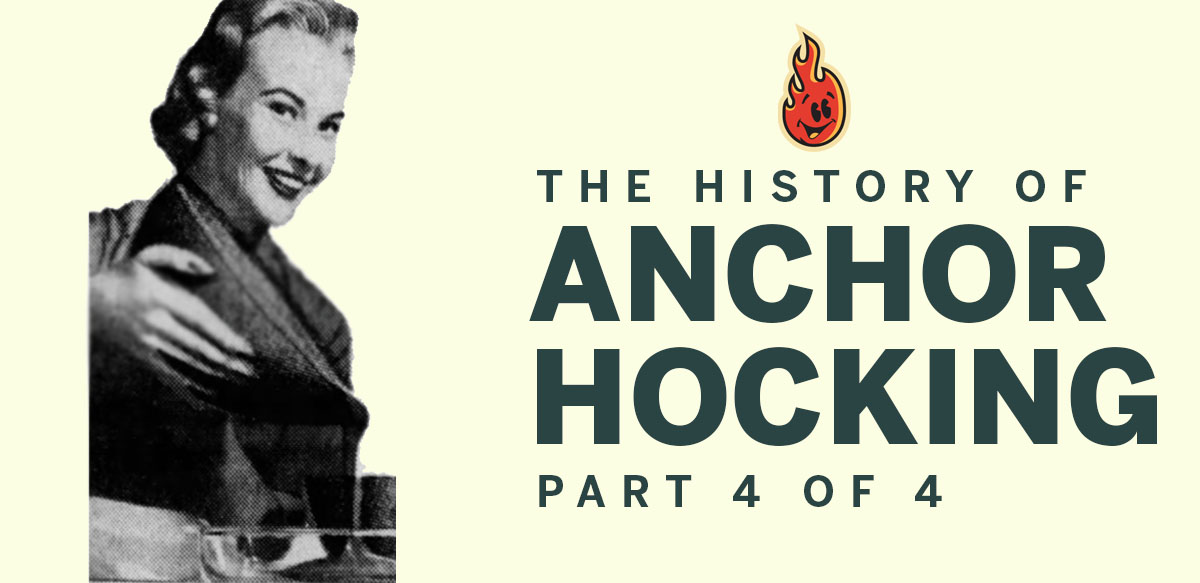

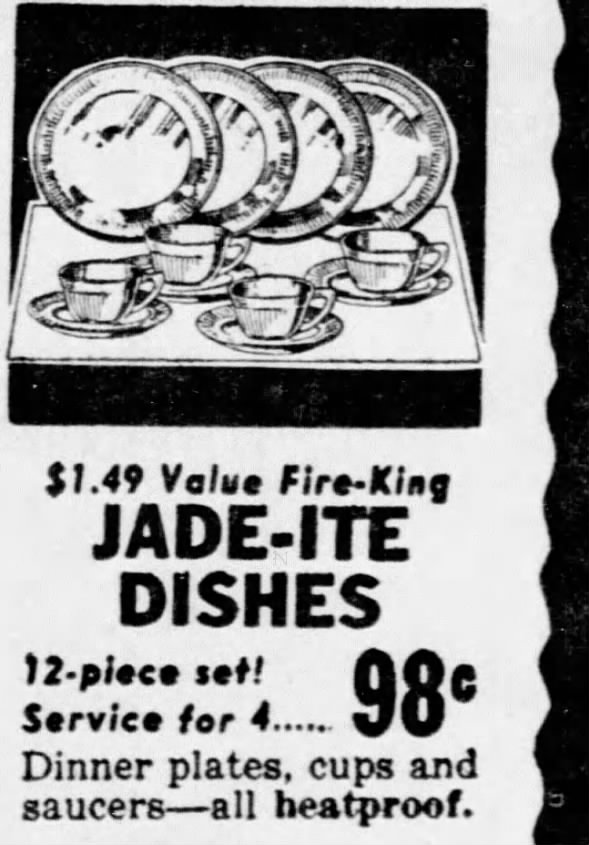
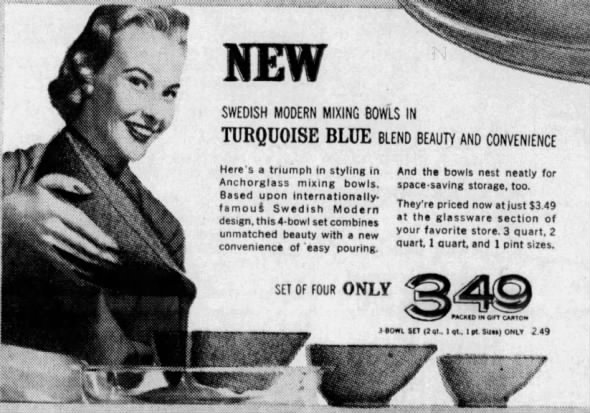

Thank you for writing this post! I’ve been collecting Fire King since inheriting my grandmother’s one cup liquid measuring cup, and I mainly look for items at estate sales rather than antique stores. I don’t collect the Jadeite line, but love the flowers and other designs out there. And yes, please write more posts about other kitchenware companies!
This article really hit home with me. I worked at this very plant for 10 years. It is as the article says like going into a mine. It’s dark, dirty, and miserable. The pay may be better than working in a retail store or something like that, but it sucks the soul right out of the employees.
Not only do the employees get treated like they’re nothing but a peasant who is beneath them. But the quality of the glassware has turned to trash today. As a past line lead at this company, I was told to have the people under me to pack chipped and broken glass.
It’s all about the quantity and not the quality. The motto of the department I was in is “sell it, don’t buy it”.
It really is a shame to see a business that once helped boom Lancaster turn into a failing business. It’s a shame to see and know that the people in charge don’t even care. They have theirs and they don’t care about those under them.
Another real shame, the union won’t even fight for their members. They throw them right under the bus using the same scare tactics as government officials. Very scary.
Hi, thank you for your comment! I can only speculate on what the factory is like based on my research, so it is eye opening to hear from a former employee! It sounds like the core values have been lost over the years due to the company changing hands so many times. As a collector, I choose to love and use my vintage kitchenware and be nostalgic about the old timey days (even if they were before my time!)
Thank you for sharing your experience.
All the best! – Britt
I love ALL Fire-King made prior to their production end in 1976. I don’t have a huge collection, because I just don’t have room to store or the money to buy every piece I see. lol I have some casseroles and baking dishes and I definitely do use them. I have a couple of batter bowls, one Jade-ite and one larger clear 2 qt size, made prior to the adding of metric markings. I tell everyone, “Give me vintage Fire-King over new Pyrex, or even new Anchor Hocking, any time.” I’m working on building a set of white swirl mixing bowls, and adding to my collection of White Swirl and Shell pattern of dinnerware and serving ware.
Hi LisaBeth,
Thank you for sharing your experience! I’m sure a lot of collectors will agree – we sure love our old dishes! Good luck with building your collection, once you start, it’s hard to stop!
Take care, Britt